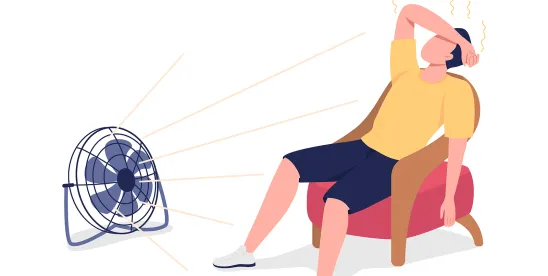The Occupational Safety and Health Administration (OSHA) unveiled its long-anticipated proposed heat illness prevention rule, which would require employers to monitor excessive heat in the workplace and develop and implement plans to address it. However, anticipated legal challenges could provide a path for revamping OSHA’s authority following recent Supreme Court of the United States decisions questioning federal agencies’ rulemaking and enforcement.
Quick Hits
- OSHA unveiled a proposed heat injuries and illnesses rule that would establish the first nationwide standard for addressing the hazards of excessive heat in the workplace.
- The rule would require employers to monitor heat in the workplace, implement measures to protect workers from such hazards, and develop heat illness prevention plans.
- The rule comes as the Supreme Court has been scrutinizing federal agencies’ rulemaking and Congress’s delegation of authority to federal agencies.
On July 2, 2024, OSHA and the U.S. Department of Labor (DOL) unveiled a notice of proposed rulemaking, titled, “Heat Injury and Illness Prevention in Outdoor and Indoor Work Settings.” The proposed rule seeks to set the first nationwide standard addressing the hazards of excessive heat in indoor and outdoor work settings and would apply to approximately 36 million workers.
The long-anticipated rule comes after OSHA has teased for years the development of a new heat injury and illness prevention standard. In April 2022, OSHA launched a three-year national emphasis program (NEP) on indoor and outdoor heat-related hazards.
In a statement announcing the proposed rule, Assistant Secretary of Labor for Occupational Safety and Health Douglas L. Parker said that the “proposal is an important next step in the process to receive public input to craft a ‘win-win’ final rule that protects workers while being practical and workable for employers.”
Proposed Heat Illness Prevention Rule
The proposed heat illness prevention rule would require most employers in the general industry, construction, maritime, and agriculture sectors to create plans to “evaluate and control heat hazards in the workplace” and “set forth employer obligations and the measures necessary to effectively protect employees from hazardous heat.”
Specifically, OSHA’s proposed heat illness prevention rule would:
- set a specification standard, meaning that it would not permit employers any discretion in deciding what to do and when to address heat as a workplace hazard;
- set an “initial heat trigger” at a heat index of 80°F, at which employers must provide drinking water and break areas;
- set a “high heat trigger” at 90°F, requiring employers to monitor for signs of heat illness and provide mandatory fifteen-minute breaks every two hours;
The proposed rule would further require covered employers to:
- “develop and implement” a specific Heat Injury and Illness Prevention Plan (HIIPP);
- designate a heat safety coordinator to “implement and monitor” the HIIPP; and
- evaluate their heat safety plans every year.
The rule would not apply to “[w]ork activities for which there is no reasonable expectation of exposure at or above the initial heat trigger” or work activities performed in areas or inside vehicles where “air-conditioning consistently keeps the ambient temperature below 80°F.”
Notably, the proposed rule would focus on the WetBulb Globe Temperature (WBGT), which refers to a “heat metric that takes into account ambient temperature, humidity, radiant heat from sunlight or artificial heat sources, and air movement,” rather than simply the temperature or traditional heat index.
Potential Legal Challenges
However, recent Supreme Court decisions have raised questions about federal agency rulemaking authority that have drawn focus on several recent agency actions, including DOL rules.
Most notably, the Supreme Court in Loper Bright Enterprises v. Raimondo overruled the forty-year-old Chevron deference framework under which courts would defer to agencies’ reasonable interpretations of the federal laws they enforced. The Loper Bright ruling has reportedly already been cited in at least five cases involving the DOL in less than a week after the ruling.
Moreover, on July 2, 2024, Justice Clarence Thomas dissented from the Court’s decision not to take a case, Allstates Refractory Contractors, LLC v. Su, which raised the issue of whether Congress’s delegation of authority to OSHA in the Occupational Safety and Health (OSH) Act to write “reasonably necessary or appropriate” workplace safety standards was unconstitutional.
In his dissenting opinion, Justice Thomas argued the Court should reconsider its standard of allowing congressional delegation when a statute creating an agency contains an “intelligible principle” that guides the agency’s exercise of authority. This principle “‘does not adequately reinforce the Constitution’s allocation of legislative power’” in Congress, Thomas argued.
“The [OSH Act] may be the broadest delegation of power to an administrative agency found in the United States Code,” Justice Thomas wrote. “If this far-reaching grant of authority does not impermissibly confer legislative power on an agency, it is hard to imagine what would.”
At least five justices have already indicated an interest in reconsidering Congress’s delegation to federal agencies, including Justice Neil Gorsuch, who separately indicated he would have granted the petition for a writ of certiorari in Allstates.
The recent actions do not mean that the Supreme Court is telling the federal government that it cannot have a workplace safety and health law or agency, but it does mean that Congress may have to do a better job of delegating authority and giving more clear and limited guidance to executive agencies.
However, potential challenges to OSHA’s newly proposed heat standard could give the Supreme Court another opportunity to question and potentially curtail OSHA’s overall authority.
Next Steps
While the prospect of OSHA’s proposed heat illness prevention rule could face legal scrutiny, the standard serves as an outline for employers of the possible measures to implement even if the standard does not survive. OSHA is already conducting heat hazard inspections and still has authority under the OSH Act’s General Duty Clause to issue citations.
Employers may want to consider evaluating existing plans to determine whether any measures would be required under the proposed rule to strengthen the ability to protect workers and avoid an OSHA citation under the General Duty Clause.
OSHA will be accepting comments on the proposed rule for 120 days following its formal publication in the Federal Register. The agency also plans to hold an informal public hearing on the proposed rule.






 />i
/>i

